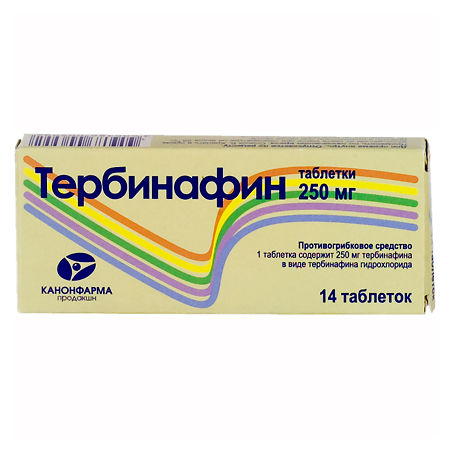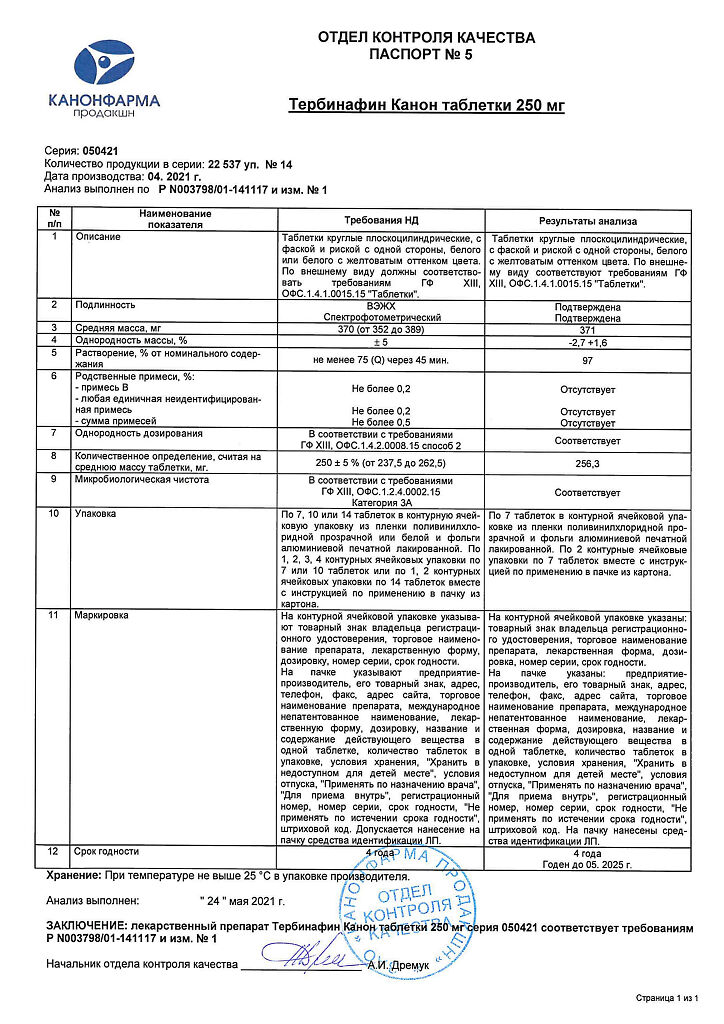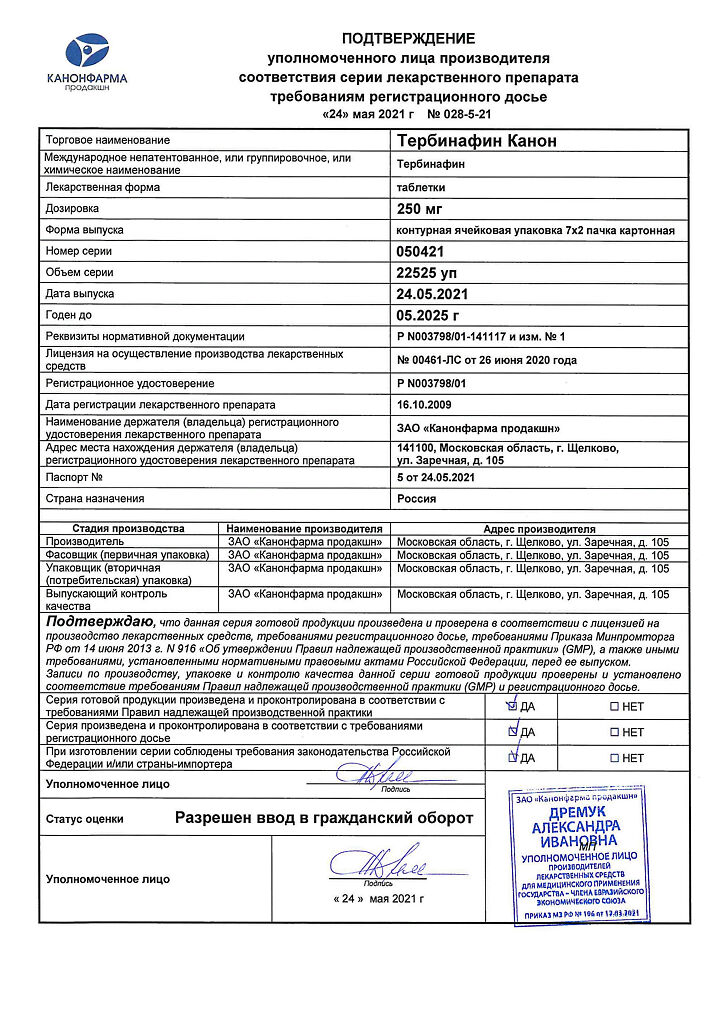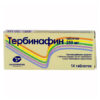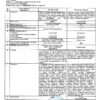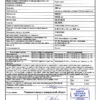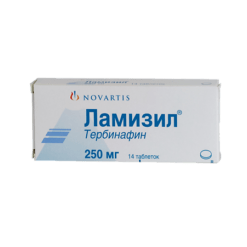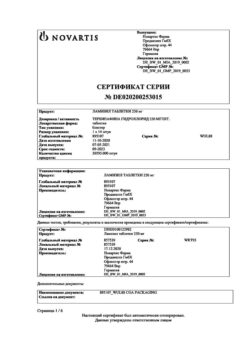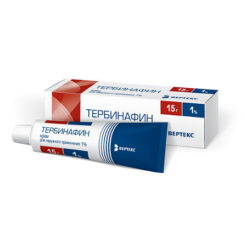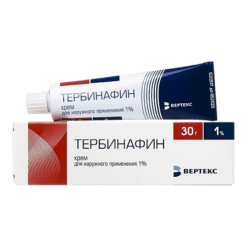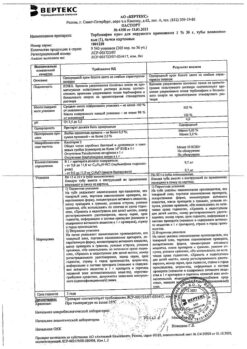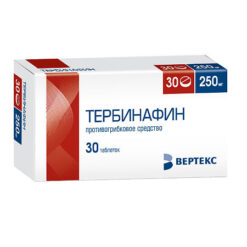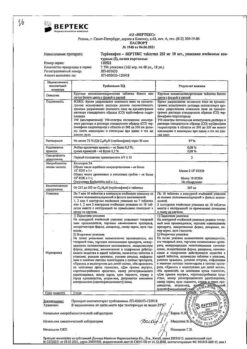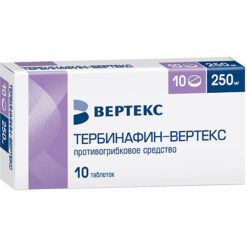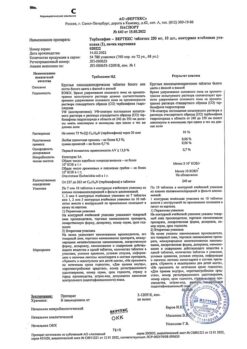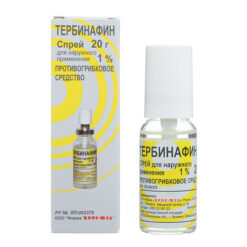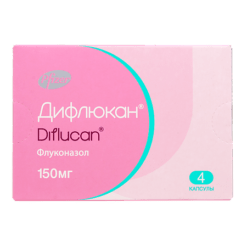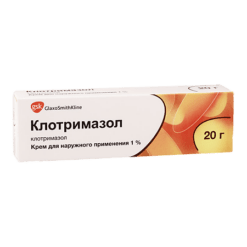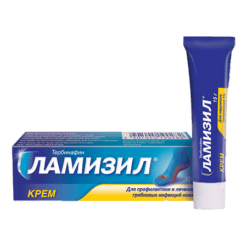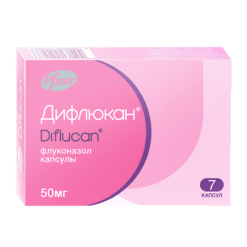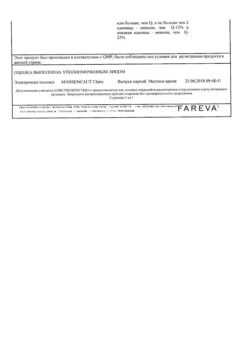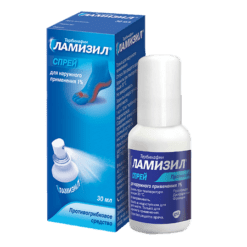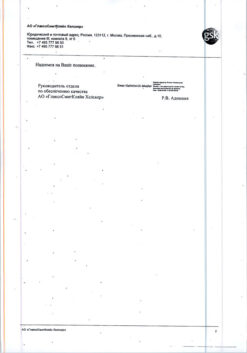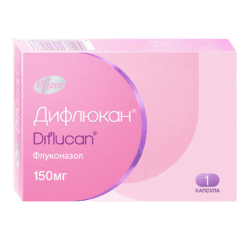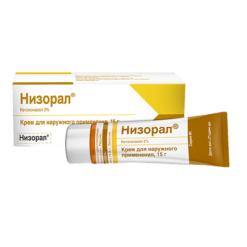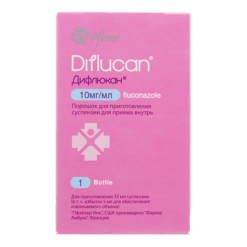No products in the cart.
Terbinafine, tablets 250 mg 14 pcs
€1.00
Out of stock
(E-mail when Stock is available)
Description
Terbinafine belongs to the group of allilamines and has a broad spectrum of antifungal action. In low concentrations it has fungicidal effect on dermatophytes Trychophyton (T. rubrum,
T. mentagrophytes, T. tonsurans, T. verrucosum, T.violaceum), Microsporum canis, Epidermophyton floccosum, mold fungi (eg Scopulariopsis brevicaulis), yeasts, mainly Candida albicans. Candida spp. fungi and their mycelial forms have fungicidal or fungistatic effect depending on the fungus species.
Terbinafine disrupts the early stage of biosynthesis of the main component of the cell membrane of the fungus ergosterol by inhibiting the enzyme squalene epoxidase.
In oral administration it is not effective in the treatment of variegated herpes caused by Pityrosporum ovale, Pityrosporum orbiculare, Malassezia furfur.
Pharmacokinetics
In oral administration it is well absorbed, after 0.8 hours half of the taken dose is absorbed; after 4.6 hours half of the taken dose is distributed in the body. One to two hours after a single oral dose of 250 mg, maximum blood plasma concentration reaches 0.97 mcg/ml. Bioavailability is 80%. Food intake does not affect the bioavailability of terbinafine.
Terbinafine is intensively bound to blood plasma proteins (99%), rapidly distributed in the tissues, penetrates the dermal layer of the skin and nail plates. It penetrates into the secretion of sebaceous glands and accumulates in high concentrations in the hair follicles, hair, skin and subcutaneous tissue.
The elimination half-life is 16-18 h, the terminal phase elimination half-life is 200-400 h.
Biotransformed in the liver to inactive metabolites. The kidneys excrete 80% of the taken dose as metabolites, the rest (20%) is excreted through the intestines.
It does not cumulate in the body. The age of patients does not affect the pharmacokinetics of terbinafine, but elimination may be reduced with renal or hepatic lesions, leading to high concentrations of terbinafine in the blood.
It is excreted with breast milk.
Indications
Indications
Active ingredient
Active ingredient
Composition
Composition
1 tablet contains:
acting ingredients:
terbinafine hydrochloride 250 mg;
excipients:
colloidal silicon dioxide,
calcium stearate monohydrate (calcium stearate 1-water),
potato starch,
microcrystalline cellulose (MCC-200),
lactose monohydrate,
crosspovidone (polyplasdone XL-10),
crospovidone (polyplasdon XL),
povidone K 90 (plasdon K-90) – 5 mg
How to take, the dosage
How to take, the dosage
Adults:
Inside, after meals. The usual dose: 250 mg once a day.
Children over 3 years:
In body weight from 20 to 40 kg – 125 mg 1 time per day.
In case of body weight over 40 kg – 250 mg once a day.
The duration of the course of treatment and the dosing regimen are determined on an individual basis and depend on the localization of the process and the severity of the disease.
Onychomycosis: therapy duration is 6-12 weeks on average. If the nails of the fingers and toes are affected (except for the big toe), or if the patient is young, the treatment duration may be less than 12 weeks. For big toe infections, a 3-month course of treatment is usually sufficient.
Some patients who have a reduced growth rate of the nails may require a longer period of treatment.
Fungal skin infections: duration of treatment in case of interfinger, plantar or “toe” localization of infection is 2-6 weeks; in mycosis of other body areas: shins – 2-4 weeks, trunk – 2-4 weeks; in mycosis caused by fungi of genus Candida – 2-4 weeks; in mycosis of scalp caused by fungi of genus Microsporum – more than 4 weeks.
The duration of treatment of mycoses of the scalp is about 4 weeks; if infected with Microsporum canis, it may be longer.
Elderly patients are prescribed the drug in the same doses as adults.
Patients with hepatic or renal insufficiency take 125 mg once daily.
Interaction
Interaction
Inhibits CYP2P6 isoenzyme and inhibits metabolism of such drugs as tricyclic antidepressants and selective serotonin reuptake inhibitors (e.g., desipramine, fluvoxamine), beta-adrenoblockers (metoprolol, propranolol), antiarrhythmic drugs (flecainide, propafenone), type B monoamine oxidase inhibitors (e.g., selegiline) and antipsychotics (e.g., chlorpromazine, haloperidol).
The drugs – inducers of cytochrome P450 isoenzymes (e.g., rifampicin) may accelerate excretion of terbinafine from the body.
Drugs – cytochrome Ð 450 isoenzyme inhibitors (e.g., cimetidine) may slow down the metabolism and excretion of terbinafine from the body. With the simultaneous use of these drugs may require adjustment of the dose of terbinafine.
Menstrual cycle disorders may occur with the simultaneous use of terbinafine and oral contraceptives.
Terbinafine reduces caffeine clearance by 21% and prolongs its half-life by 31%. It does not affect the clearance of phenazone, digoxin, warfarin.
When co-administered with ethanol or drugs with hepatoxic effects, there is a risk of drug-induced liver damage.
Special Instructions
Special Instructions
The duration of therapy may also be affected by factors such as the presence of concomitant diseases, the condition of the nails with onychomycosis at the beginning of treatment.
If after 2 weeks of treatment of the skin infection there is no improvement, the pathogen and its sensitivity to the drug should be determined again.
The systemic use in onychomycosis is justified only in case of total lesion of the majority of nails, the presence of marked subnail hyperkeratosis, the failure of previous local therapy.
In the treatment of onychomycosis, a clinical response, confirmed by the laboratory, is usually observed several months after mycological cure and discontinuation of the treatment, due to the speed of regrowth of healthy nails. Removal of the nail plates is not necessary when treating onychomycosis of the hands for 3 weeks and onychomycosis of the feet for 6 weeks.
In the presence of liver disease, clearance of terbinafine may be reduced.
During treatment, serum hepatic transaminase activity should be monitored.
In rare cases after 3 months of treatment cholestasis and hepatitis occur. If there are signs of liver dysfunction (weakness, persistent nausea, loss of appetite, excessive abdominal pain, jaundice, darkened urine or discolored stools) the drug should be stopped.
Prescribing terbinafine to patients with psoriasis requires caution because in very rare cases terbinafine may provoke an exacerbation of psoriasis.
In treatment with terbinafine, general rules of hygiene should be followed to prevent the possibility of reinfection through underwear and shoes. During treatment (after 2 weeks) and at the end of treatment, antifungal treatment of shoes, socks and stockings should be performed.
Contraindications
Contraindications
Caution should be exercised when:
Side effects
Side effects
Dyspeptic disorders (decreased appetite, nausea, diarrhea, feeling of full stomach, abdominal pain); skin allergic reactions (urticaria, rash); musculoskeletal reactions (arthralgia, myalgia), aggravation of systemic lupus erythematosus.
Taste disorders, including their loss (recovery occurs within weeks after stopping treatment).
Extremely rare (with a frequency of 0.01-0.1%) hepatotoxic effect is observed (increased activity of “hepatic” transaminases, liver failure).
Malignant erythema exudative (Stevens-Johnson syndrome), toxic epidermal necrolysis (Lyell’s syndrome), psoriasis-like skin rashes, exacerbation of psoriasis, anaphylactoid reactions, agranulocytosis or thrombocytopenia, neutropenia, lymphopenia.
Overdose
Overdose
Symptoms: headache, dizziness, nausea, vomiting, pain in the epigastric region, rapid urination, rash.
Treatment: measures to eliminate the drug (gastric lavage, taking activated charcoal); if necessary – symptomatic supportive therapy.
Pregnancy use
Pregnancy use
Terbinafine has not been found to have teratogenic properties in experimental studies.
The use of the drug in pregnancy is possible in cases where the estimated benefit to the mother exceeds the possible risk to the fetus. Terbinafine is excreted with the breast milk.
If it is necessary to use the drug during lactation, the question of stopping breastfeeding should be addressed.
Similarities
Similarities
Additional information
| Shelf life | 4 years |
|---|---|
| Conditions of storage | In a dry, light-protected place at a temperature not exceeding 25 °C |
| Manufacturer | Kanonfarma Production ZAO, Russia |
| Medication form | pills |
| Brand | Kanonfarma Production ZAO |
Other forms…
Related products
Buy Terbinafine, tablets 250 mg 14 pcs with delivery to USA, UK, Europe and over 120 other countries.

